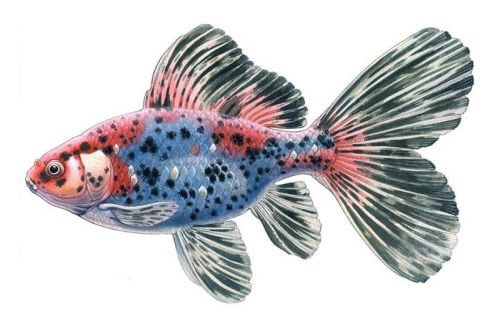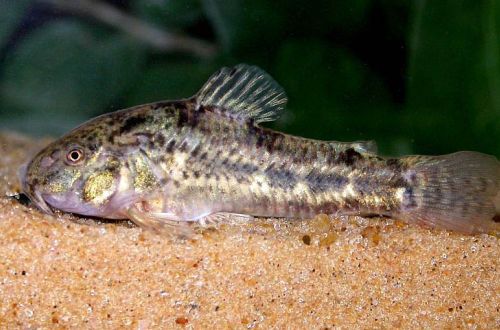
Rainbow Sulawesi
Telmaterina ladigesi, Rainbow “Sunbeam” or Rainbow Sulawesi, scientific name Marosatherina ladigesi, belongs to the family Telmatherinidae. The fish is distinguished by its bright coloration, peaceful disposition and ease of maintenance. All these qualities make it an excellent choice for the home tropical aquarium.

Contents
Habitat
Endemic to the island of Sulawesi (Indonesia). Fish live in clean small rivers flowing down the slopes of numerous hills covered with tropical forest.
Brief information:
- The volume of the aquarium – from 70 liters.
- Temperature – 22-28°C
- Value pH — 7.0–8.0
- Water hardness – medium to hard (10-25 dGH)
- Substrate type – any
- Lighting – subdued
- Brackish water is permissible in a concentration of up to 15 g of salt per 1 liter of water
- Water movement is weak
- The size of the fish is up to 8 cm.
- Food – any food
- Temperament – peaceful
- Keeping a flock of at least 6-8 individuals
Description
Adults reach a length of up to 8 cm. Olive color with bright yellow fins and a contrasting blue line running horizontally from tail to head. Males are much more colorful than females and display larger fins.
Food
Accepts all types of popular food – dry, frozen and live. A varied diet of quality foods will allow the fish to showcase their best colors. If possible, it is desirable to feed live food at least once a week.
Maintenance and care, arrangement of the aquarium
A small flock of fish will need an aquarium of 70 liters or more. The design uses a variety of floating and rooting plants, arranged in groups to preserve free areas for swimming. The remaining decorative elements are selected based on the preferences of the aquarist.
Particular attention should be paid to water quality. Weekly replacement of part of the water with fresh water (at least 25% of the volume) and the installation of a productive filtration system are a prerequisite for keeping the Rainbow Sulawesi. A weak salt concentration of not more than 15 g per 1 liter of water is acceptable.
Behavior and Compatibility
Calm and peaceful appearance, goes well with other fish of similar size and temperament, able to live in similar conditions. Keeping a flock of at least 6–8 individuals in the ratio of 1 male to 2–3 females.
Breeding / breeding
Breeding in a home aquarium is quite simple. Fish are able to give offspring throughout the year. For spawning, it is necessary to provide thickets of small-leaved and low-growing plants or mosses. Their artificial counterparts are also suitable. The mating season lasts up to 2 weeks, during which the female daily lays a portion of eggs. Eggs are attached to the surface of plants with thin sticky threads. The male is able to fertilize several clutches from different females at once. Parental instincts are not developed, so adult fish tend to eat their own offspring.
In order to preserve the fry, the eggs are promptly removed from the main aquarium and carefully transferred to a separate tank with identical water conditions. To maintain acceptable conditions, it is enough to use a heater and a simple airlift filter with a sponge.
The fry appear after 5-10 days, depending on the water temperature. At the first stage of life, microfeeds, such as ciliates, will be required, then specialized powdered foods and / or Artemia nauplii can be fed.
Fish diseases
Health problems arise only in case of injuries or when kept in unsuitable conditions, which depresses the immune system and, as a result, provokes the occurrence of any disease. In the event of the appearance of the first symptoms, first of all, it is necessary to check the water for the excess of certain indicators or the presence of dangerous concentrations of toxic substances (nitrites, nitrates, ammonium, etc.). If deviations are found, bring all values back to normal and only then proceed with treatment. Read more about symptoms and treatments in the Aquarium Fish Diseases section.





